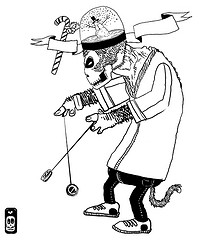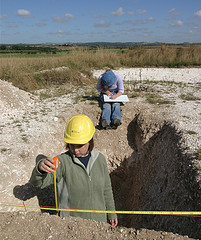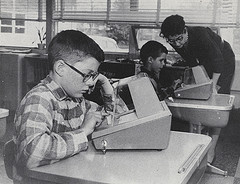Nov 5, 2009 Comments Off on The Litl Difference
The Litl Difference
 Litl launched the litl (though Wired seems to think it’s called “the Webbook”– clarification guys?) yesterday and they invited folks to check it out at the local Starbucks (here’s some photographic proof that I was in attendance).
Litl launched the litl (though Wired seems to think it’s called “the Webbook”– clarification guys?) yesterday and they invited folks to check it out at the local Starbucks (here’s some photographic proof that I was in attendance).
Given my years of ingrained computer-user habits, I did not find litl’s card-metaphor desktop, novel controllers (buttons, rollers, etc.), and unique capabilities (bend-over-backwards easel mode) intuitively usable, though the friendly litl people happily walked me through it and one beta-tester told me that, while she had the same experience at first, after a while she found herself missing some of the litl features when she was back in her “native” computer environment.
Similarly, the head of one beta-tester family (he, his wife, and his three children all test-drove the litl) told me he found that the younger the user, the quicker the adoption of litl. As he put it, his middle child had enough computer experience to complain about missing or “different” features, while his youngest took to it like a duck to water.
Of course, the main point of the litl is this difference. It looks like a laptop, but it’s different; it sounds like it’s a netbook, but it’s different; it acts like a traditional computer, but it’s different. This emphasis on difference is both litl’s strength – it is really a new kind of thing – but also its greatest vulnerability.
I told the litl folk that what they are attempting is bold and, for that reason, fraught with entrepreneurial peril, in part because the device doesn’t ask people to do one thing differently, it asks them to do a lot of things differently (store all your data in the cloud, rely on web-based apps instead of software, think in terms of “cards” rather than pages or docs or whatever). And no matter how much we celebrate diversity or shout “Vive la différence,” getting people to do things differently is frickin’ hard.
Innovation by definition means doing things in a new way, but there is a limit to how much “new” people can handle, particularly when they don’t see the clear advantage or the critical difference.
I believe that this “difference limit,” and not just the $700 price tag, is the most daunting hurdle facing the litl team. Getting around it will probably involve partnerships with companies that have the reach and sway to influence technology buying behaviors, or an aggressive “seeding” program that gets litl webbooks into the hands of the 7-and-under crowd (kind of like Apple did by getting Macs into the hands of college-age kids making the leap from typewriter to word processor back in the 1980s).
Of course, knowing the people involved as I do, I’m sure they’ll come up with something completely different.
Image Courtesy of lucky_lucas.
 A bunch of folks I’ve known for a while have today introduced a “webbook” called the “
A bunch of folks I’ve known for a while have today introduced a “webbook” called the “ Gonna make this quick.
Gonna make this quick.



 Minh Nguyen, a Southern California-based web designer currently working for Sony Electronics, has been represented by our San Diego office for a little over a year.
Minh Nguyen, a Southern California-based web designer currently working for Sony Electronics, has been represented by our San Diego office for a little over a year.
